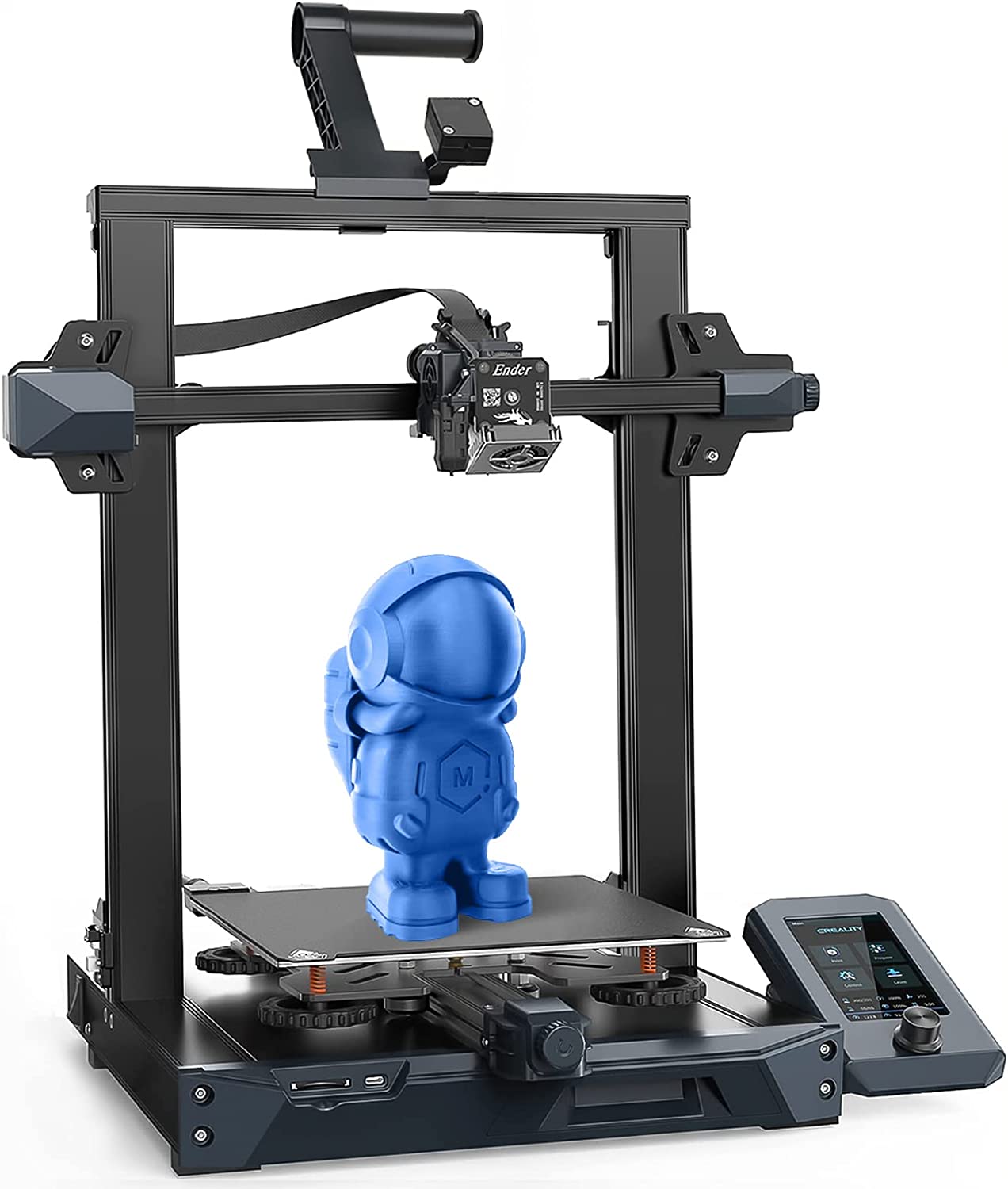Compare Ender 3 S1 vs H2D
Comparison between the best 3D printers
Choose the best 3D printer at the best price. The cheapest 3D printers are here.
Buy a 3D printer here with 3D Fila.
 |
 |
|
| Model | Ender 3 S1[BUY Ender 3 S1] |
H2D |
| Printing Material | Filament | Filament |
| Buy Filament for Creality 3D Ender 3 S1 | Buy Filament forBambu Lab H2D | |
| Estimated price | $399,00 | $1899,00 |
| Manufacturer | Creality 3D | Bambu Lab |
| Release Year | 2021 | 2025 |
| Print Volume [mm] | 220x220x270 | 350x320x325 |
| Printer Size [mm] | 455x490x625 | 492x514x626 |
| Weight [kg] | 9,1 | 42,3 |
| Power Loss Recovery | YES | YES |
| Enclosed printer | NO | YES |
| Bed Leveling | Automatic | Automatic |
| Filament End Sensor | YES | YES |
| Bed type | Heated | Heated |
| Power supply system | Direct Drive | Direct Drive |
| Standard nozzle | 0,4 | 0,4 |
| Maximum Nozzle Temperature [°C] | 260 | 350 |
| Maximum Bed Temperature [°C] | 100 | 120 |
| Maximum printing speed [mm/s] | 180 | 600 |
| Filament holder | YES | YES |
| Camera for supervision | NO | NO |
| Recommended filaments | PLA, TPU, PETG, ABS | PLA, PETG, ABS, ASA, TPU, PVA, Nylon (PA) |
| Recommended slicers | Cura, Simplify, Slic3r, IdeaMaker, Creality Slicer e outros | Bambu Studio |
| Maximum Resolution [mm] | 0,05 | 0,01 |
| Processor | ||
| Display | Display 4,3'' | Touchscreen 5'' |
| Power Supply | ||
| Connectivity | SD / USB | Wifi, Bambu bus, Cartão SD |
| Operating systems | Windows, Mac, Linux | Windows, Mac, Linux |
| Date of registration in the system | 2023-03-28 | 2025-03-31 |
| Release date | 2021 | 2025 |
| Extra features | The Creality Ender 3 S1 printer stands out for its easy assembly and quiet operation. It has automatic bed leveling and a direct drive system, providing high-quality prints. The design is sleek, with flat cables in mesh sleeves and a magnetic bed. The Creality Sprite extruder is lightweight and developed in-house, supporting a maximum nozzle temperature of 260 degrees. It includes a filament run-out sensor and power loss recovery, with a dual Z-axis for greater support and stability. The build plate is flexible steel with PC coating, and the printer supports a wide variety of filaments. | Bambu Labs H2D combines high-speed 3D printing with a chamber heated up to 65 °C, dual extrusion with automatic nozzle switching, an AMS for filament drying and exchange, and AI sensors that detect failures. It offers optional laser and digital cutting capabilities, features intelligent calibration through computer vision, vibration control, enhanced fire safety, and real-time camera monitoring. |
| Support for multiple colors and materials (AMS and CFS) | NO | YES |
Notes * |
||
| Cost-benefit | 7 / 10 | 7 / 10 |
| Hardware | 2 / 10 | 7.2 / 10 |
| Tela | . | . |
| Print volume | 3 / 10 | 4 / 10 |
| Performance | 1 / 10 | 5 / 10 |
| [BUY Ender 3 S1] |
Conclusion |
| In comparing the Creality Ender 3 S1 and the Bambu Lab H2D, several key factors emerge that highlight both the strengths and limitations of each model, catering to different user needs and preferences. The Ender 3 S1, priced considerably lower, caters to hobbyists and those new to 3D printing. It offers a solid build quality, automatic bed leveling, and versatility with supported filament types such as PLA and ABS. Its print volume and maximum speed are decent for entry-level projects, making it an excellent choice for those seeking an affordable, reliable 3D printer without the need for advanced features. On the other hand, the Bambu Lab H2D is positioned as a high-performance machine targeted at advanced users and professionals. Its significantly larger print volume, higher maximum printing speed, and support for a broader range of filaments—including more specialized materials—set it apart for complex and larger-scale printing tasks. The H2D also includes advanced features like dual extrusion, AI sensors for failure detection, and an enclosed build chamber, which enhances printing consistency and safety. Overall, the choice between these two printers largely depends on the user's experience level, project requirements, and budget considerations. While the Ender 3 S1 offers great value and ease of use for beginners, the Bambu Lab H2D presents a robust solution for professionals seeking speed, versatility, and advanced technology in their 3D printing endeavors. For those who prioritize performance and features, the investment in the H2D may be justified, whereas the Ender 3 S1 remains a strong contender for more casual or budget-conscious users. |

